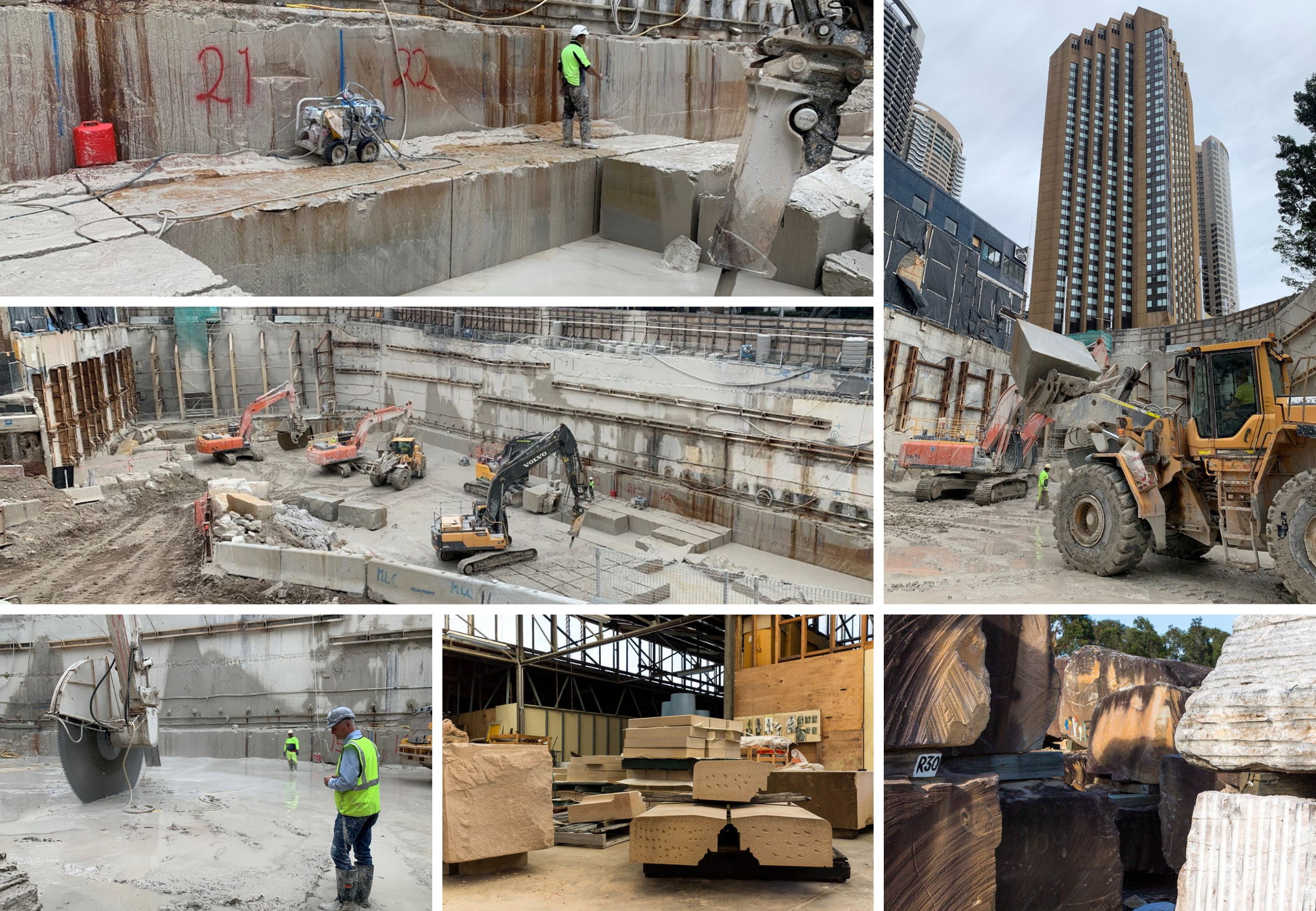Sydney Sandstone Harvesting
The Minister’s Stonework Program uses sandstone sourced locally, from dug-out carparks in Sydney CBD, reducing transport costs and minimising environmental impact.
Locally quarried sandstone, particularly Yellow Block Sandstone, defines the architecture of many nineteenth and early twentieth-century public buildings across the state of New South Wales. Representing the strength and solidity of the government’s presence, they enrich town centres and regional communities with a heritage steeped in European classical architecture.

In safe hands
The NSW Government now has custodianship of over 800 heritage assets built of sandstone. They include courthouses, hospitals, lighthouses, schools, colleges, government offices, landscape features, monuments, memorials and statues. This attention and care is exercised through the Office of the Government Architect and departmental officers in NSW Public Works and Heritage Stoneworks, in partnership with various government agencies.
The motherlode of this majestic legacy of public works is the sandstone beneath the Sydney Basin, the renowned Hawkesbury Sandstone found in a large arc from Ulladulla on the south coast, west to the Great Dividing Range and north to Newcastle.
The bedrock was millions of years in the making, being formed about 250 million years ago by the marine deposition of sediment as sea levels rose when the glaciers covering large parts of the globe began to melt. Crustal uplifting filled with further land and marine sediments, while continental drift carried the Australian continent away from the larger land mass of Gondwana. Earth movement and erosion shaped the deeply dissected sandstone valleys and gorges, exposing the sandstone escarpments and irregular cliffs familiar to us today.
As the British settlement in Sydney began to take shape from 1788, this sandstone was quarried to create the fine buildings and monuments which symbolised colonial authority and the ideals of the Georgian and Victorian social order imported from Britain. In the rich deposits around the foreshores of Pyrmont, no stone was more highly prized than the medium-grained honey-coloured Yellow Block that defined the mid to late nineteenth-century buildings of the sandstone city itself, Sydney.

Early days of the Minister’s Stonework Program
Despite the sandstone buildings’ imposing presence, their building material – exposed to wind and water and air pollution after being quarried – soon began to show worrying signs of decay.
As long ago as 1899, Government Architect Walter Liberty Vernon noted that ‘the stone being compressed sand with some varieties being better than others, and of not knowing a single stone building in this colony 80 years of age [which] is in anything like good condition.’
The responsibilities of the NSW Public Works portfolio have historically included the government's public-building projects across the State since the early nineteenth century – including their design, building, construction and maintenance. Fast forwarding to 1971, it was the view of Government Architect Edward ‘Ted’ Farmer that the Government Architect’s Branch (as it was then known) should be the guardian of historic buildings belonging to the State Government. This would ensure that interventions, unsympathetic additions and makeshift repairs and maintenance could be minimised.
His views coincided with the growing realisation – as more and more structures began to show their age – of the State Government’s burgeoning responsibility regarding public safety. In addition, short-sighted, invasive or intrusive ad hoc repairs were leading to further degradation.

The hunt for new supplies
The Program has been innovative in sourcing new stone. In 1985, the NSW government delayed construction of a Maritime Services building in Kent Street for nearly two years to allow the quarrying of approximately 800 cubic metres of Yellow Block Sandstone. The stone was extracted using a Water Board trenching machine that facilitated quarrying in a built-up urban environment.
By the mid-1990s, extensive geotechnical investigations by NSW Public Works saw a stone-harvesting opportunity on small-footprint sites designated for multilevel basement car parking. These were opening in Pyrmont and the CBD. The use of excavator-mounted cutting wheels allowed for precision quarrying on a compact site. Restoration-quality Yellow Block Sandstone was the prize and its genus loci equivalent to the original sourced stone of much of the NSW government portfolio. This was the beginning of the Minister’s Stone Stockpile.
Ensuring that the ongoing need for fresh supplies of Yellow Block Sandstone could be met prompted the City of Sydney to develop a condition of development consent requiring the sourcing of Yellow Block Sandstone from excavations for restoration of Sydney heritage buildings.
